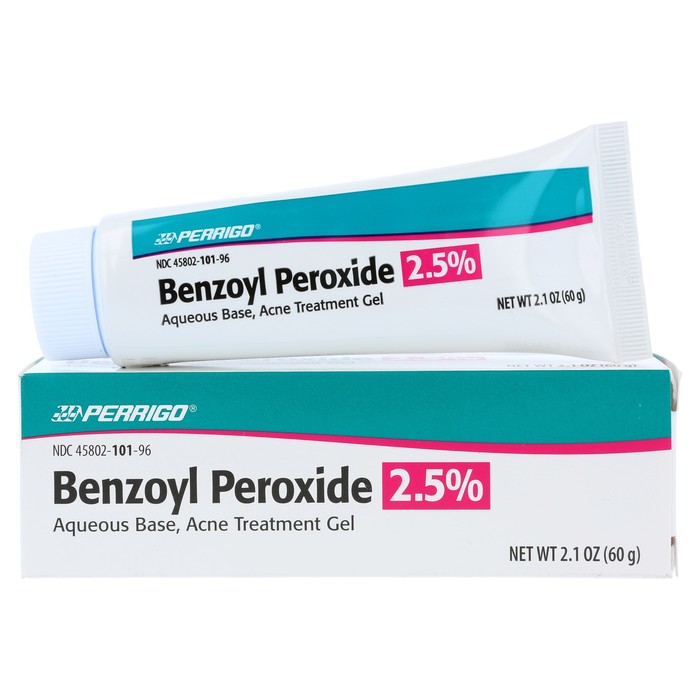BENZOYL PEROXIDE

Definition: This medication is used in topical medications to treat mild to moderate acne. It may be used in combination with other acne treatments. When applied to the skin, benzoyl peroxide works by reducing the amount of acne-causing bacteria and by causing the skin to dry and peel. [1]
How Benzoyl Peroxide Works
Propionibacteria acnes, (P. acnes), are the bacteria responsible for acne breakouts. They cannot live in an aerobic (oxygen-rich) environment and hide in the pores of skin. Benzoyl peroxide works by introducing oxygen into the pore, thereby killing P. acnes. [3] When the bacteria population is reduced, the number of breakouts on the skin is reduced as well. Benzoyl peroxide also helps to rid the follicle of excess dead skin cells. Clearing the pore of cellular debris will lessen the chance of pore blockages, or comedones. [3]
Medications that contain Benzoyl Peroxide include Clearasil and ProActiv. As one of the first proven treatments for acne, it has been used for decades and is still one of the most popular and successful treatments for acne. [3]
Dosage and Use
Benzoyl peroxide for acne treatment is typically applied to the affected areas in gel or cream form, in concentrations of 2.5% increasing through the usually effective 5% to up to 10%. Research suggests that 5 and 10% concentrations are not significantly more effective than 2.5% and 2.5% is usually better tolerated. [2] There are many benzoyl peroxide products available and many are available without a prescription that do not have as much of the active ingredient. Consult your doctor or pharmacist on the choice of the product that is best for you.
Apply benzoyl peroxide to the areas of your skin affected by acne. Avoid your eyes, inside your nose or mouth, or on any areas of broken skin since it may cause irritation. If this occurs, flush the area with plenty of water. [1] Benzoyl peroxide may bleach hair or fabrics. If too much drying occurs, you may need to rinse the cleanser off sooner or use the product less often. [1] If you are using the liquid wash or cleanser bar, use it instead of soap once or twice a day. Do not scrub the skin as this may cause more redness and irritation.
The use of benzoyl peroxide often must be continued, even after acne clears up. Once treatments are stopped, bacterium populations can increase and acne may return. Your dermatologist can help you determine how long to continue your benzoyl peroxide treatments. Dosage is based on your medical condition and response to therapy. Improvement in acne is usually seen after 3 weeks of use, and maximum benefit after 8-12 weeks of use. [1]
Side Effects
Skin reactions such as peeling, itching, irritation, and reddened skin may occur, especially at the start of treatment. [1] If any of these effects persist or worsen, notify your doctor or pharmacist promptly. You may need to apply smaller amounts of the drug or use it less often.
Remember, use of any medication is a balance of risk and benefits. If your doctor has directed you to use this medication, remember that he or she has judged that the benefit to you is greater than the risk of side effects. [1] A very serious allergic reaction to this drug is unlikely, but you should seek immediate medical attention if it occurs. Symptoms of a serious allergic reaction may include: rash, itching/swelling (especially of the face/tongue/throat), severe dizziness, or trouble breathing. [1] Additionally, this is not a complete list of possible side effects and you should always be careful about beginning new medications.
References
Mills, O. H., Jr.; Kligman, A. M.; Pochi, P.; Comite, H. (1986), “Comparing 2.5%, 5%, and 10% benzoyl peroxide on inflammatory acne vulgaris”, Int. J. Dermatol. 25 (10): 664–67.
http://acne.about.com/od/acnetreatments/a/benzoylperoxide.htm


